#reminded of this by going to the serbian restaurant again
Text
white just means a vaguely-germanic who caught the right kind of Christianity most of the time, doesn't it
#reminded of this by going to the serbian restaurant again#id be willing to extend it to the general north sea except that switzerland is probably white under any reasonable characterization#probably western northern italy as well maybe some of france no comment on the western slavs#maybe its just because they're the only people who really only just got civilization recently and hadnt managed to build up the#immune system as you see in other countries and happened to race the other possible candidates into enough slightly peaceful coexistence#while still maintaining proper rivalry which ended up discouraged under more imperial regimes#one of the things i meant to get at with the Plato posting is that to advance intellectually you need to alieve that its both a fight#and a sort of game; which is why you dont go to the death as might beift a proper challenge#anyways welcome to the Real Bad Takes hour which is why i have this blog#fuck you all for coming and sleep well!
1 note
·
View note
Text
5/25
This day in Serbia began bright and early, with a quick breakfast before departing on a walking tour. Our tour guide, Nina, was a kind and bubbly young woman who knew a great deal about Serbian history and sites. We boarded their bus and drove off to our first stop, the tomb of the unknown soldier, at 9 a.m. when the weather was still cool and refreshing.
When we arrived at the tomb, we were greeted by a long path of steps, and Nina described how the tomb represented those that had fallen in battle for the country of Serbia. The tomb itself was constructed entirely of a black marble, standing tall and overseeing a great deal of the Serbian countryside. Peering down, you could see the greenery and trees that sprawled across the mountain; peering up you could see the great detail of the finely cut marble.
Inside the tomb lay a wreath of flowers, with the walls bordered by traditional marble sculptures of women wearing dresses. These statues were over twelve feet tall, standing proud and representing Serbian nationality. This would not be the first stop that truly emphasized the importance of nationality and patriotism in their country, however.
After a variety of pictures and embracing the significance of the tomb, we made our way down the steps and back onto the bus to go to our second stop. The second stop was a massive tower, and from the ground, it was almost impossible to fathom how people could construct something so tall, yet so narrow. We traveled up the tower by elevator, and the view from the top was breathtaking. It almost felt like we could see all of Serbia from one little room, especially when we looked down from the telescope.
The first thought that came to my mind was that for such a large city, the smog had to be so low since the air seemed so clear. When we went down a story to enjoy some refreshing drinks at their cafe, it all clicked. Everyone walks, the city itself is built with everything someone could need within walking distance. Work, the stores, and even excursions like movies and museums almost seemed to stack on themselves. It wasn't necessary to drive cars, nonetheless, we lazy Americans still had the luxury of a bus.
Speaking of the bus, we boarded it once again to go to our next destination. By far, the most interesting destination of all was the gallery built within one of Josip Broz Tito's homes. Nina explained that the home itself was originally built with a massive flower garden (which was still present and well-maintained), but had been used as a commemorative site to Tito. He and his wife were buried on the grounds, and statues had been erected throughout, as well as a gallery filled with all of the gifts that had been sent in the event of his passing. **
Each gift was a reminder of the significance Tito played in the history of Yugoslavia, especially for impoverished people. Although the government was communist at the time, he had helped rebuild their economy and provided the people with a reason to work, build a new city, and offer a better future for new generations. People paid their respects to him by visiting his grave and basking in the monumental experience of the gardens. **
Following the visitation of the Museum of Yugoslavia, we stopped at a monastery. The monastery itself is the second biggest globally and is currently under construction as they complete the interior. However, it was still gorgeous, the paintings and intricate gold details truly intensified the impact. As someone who is religious, the monastery was exceptionally wonderful to visit, and it gave me a moment to reflect on my own spirituality. At home, the power of being close to God has always been extremely important in my daily life, but it was very much magnified during this trip.
The next stop on the tour was the fortress along the river which we visited on the first day, which we decided to cut short in exchange for a longer lunch. We stopped for lunch at a local restaurant, recharging with a five-course meal, beginning with an appetizer, salad, two entrees, and a dessert. Completely exhausted, but well-fed, we returned to the hotel to sleep off all of the food. My small group of friends opted to grab a small meal later in the night at the restaurant attached to the hotel, and retire early to get some much needed rest.
**Separate post detailing Josip Broz Tito's time in power, gifts, and the gallery**
1 note
·
View note
Text
Everything in S4 has happened before - did you make a list?
The wheel turns and there’s really nothing new under the sun…
It struck me that just about everything we see in Series 4 of BBC Sherlock, seems to have happened before, in one form or another. Which I believe is strong evidence for EMP theory (or at least something similar). I’m sure several people have already commented on this, but I’ll try to write down a whole list of what I’ve found this far – feel free to add to it!
Events in The Six Thatchers
1. Sherlock (in a Secret Service meeting about how to cover up him shooting Magnussen): “I am taking it seriously; what makes you think I’m not taking it seriously?”
Earlier event: In TEH, the Gothic fan in Anderson’s Holmes fan club, theorizing that Sherlock and Moriarty are attracted to each other: “I do take it seriously. I don’t think we should wear hats.”
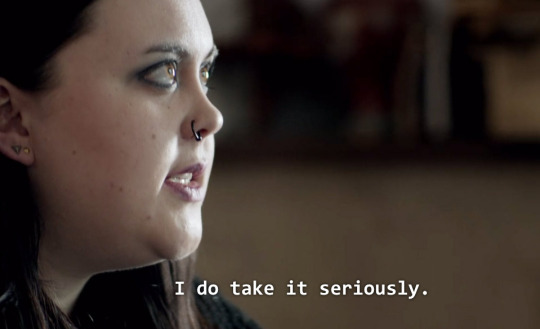
2. Sherlock is brought back to London to figure out how Moriarty can be transmitting his “Miss me?” message on every screen in the country. Sherlock’s plan is to sit and wait for Jim’s “spider web” to quiver, rather than trying to find Moriarty himself.
Earlier event: In TEH Sherlock was brought back to London to foil a terrorist attack on the city. At first, he was just waiting for one of his markers (“rats”) to make a move.
3. In one case, Sherlock is in 221B, holding a plastic bag with ice and a human thumb in it.
Earlier event: In ASiB Mrs Hudson discovers a plastic bag in the fridge of 221B, containing human thumbs.
4. In “The Circus Torso” Sherlock mentions tattoos on dead bodies.
Earlier event: In TBB (where a Chinese circus is involved) there are bodies with Black Lotus tattoos on their heels.
5. In “The Duplicate Man” we get the following quote: “How could Dennis Parkinson be at two places at the same time? And murdered in one of them?” Before John manages to say anything, Sherlock tells him: “It’s never twins, John.”
Earlier event: In TAB (Victorian times inside Sherlock’s mind) we have Watson saying about Emilia Ricoletti: “But she can’t have been in two places at the same time, can she?” Watson asks why it couldn’t have been twins, and Holmes answers “Because it’s never twins.”
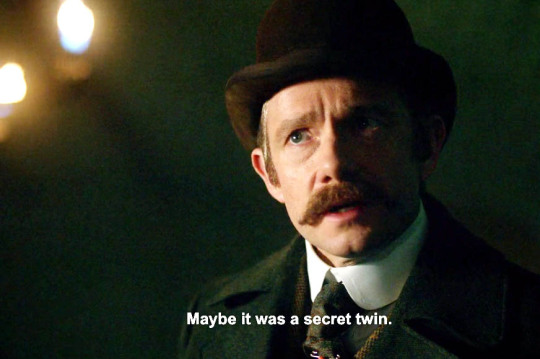
6. And also (reality check!) there’s John hammering down all their cases into his blog as usual, with titles and all. Quite some time must indeed be passing when John is frequently transmitting blog posts, because in between them he even becomes a father! Lestrade refers twice to John going to publish his blog about the Six Thatcher case, thereby making him, Greg, look incompetent and undeserving of the credits.
Except there are two great big flaws in this:
a) John is only seen writing on a picture file (.jpg), not a real blog prompt and
b) There are no new blog entries on the official www.johnwatsonblog.co.uk since John’s wedding in TSoT. Not one. The last one from that time is written by Sherlock himself, complaining about John’s and ‘Mary’s’ “sex holiday”. John’s last blog post was from the Mayfly Man case at the time of his stag night, shortly before the wedding.
7. Charlie Welsborough’s car blows up with his dead body inside.
Earlier event: In TGG a hostage was covered in explosives and placed in a car, waiting for it to blow up.
8. Sherlock is ‘deducing’ a client’s case, telling him that his wife is a secret spy who will drug the US president with an injection in the neck.
Earlier event: In TEH John was drugged with an injection in his neck.
9. Sherlock is solving a case about a client who has a heart failure causing him amnesia.
Earlier event: In HLV Sherlock’s heart stops temporarily. Judging by TLD, something weird has happened with Sherlock’s memory in S4.
10. Six busts of Margaret Thatcher are being smashed to pieces, which is the focus case of this episode.
Earlier events: The whole case is described long before on John’s blog with the same title, with smashed Thatcher figures and with basically very similar events. Maggie Thatcher was also a password to secret info in THoB.
11. Craig the Hacker talks about “Ostalgia” and “Cold War memorabilia”; how some people in Germany long for the old communist era.
Earlier event: In TEH, when Sherlock was tortured in Serbia, we saw uniforms that looked a lot more like Red Army uniforms from the past, than modern Serbian military uniforms:
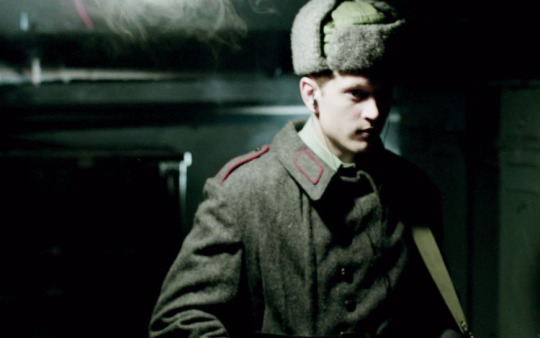
12. ‘Mary’ calls Sherlock a ‘Dragon Slayer’ when he meets her in his secret bolt hole.
Earlier events: In TRF Moriarty talked on a video screen about Sherlock as a knight slaying dragons. In HLV Mycroft claimed that Sherlock sees himself as a Dragon Slayer.
13. ‘Mary’ is revealed as one of four freelancing assassins in A.G.R.A. who had been hired for an operation in Tbilisi, Georgia.
Earlier event: In TRF, according to Mycroft, Moriarty had assigned “four top international assassins” relocated to within “spitting distance” of 221B.
14. ‘Mary’ uses a poisoned letter to drug Sherlock; he gets affected when he inhales the vapor from the paper. Then he sees a childhood memory when he was playing pirates with his dog.
Earlier event: In THoB the murderer uses an aerosol perceived as fog to drug his victims with a substance that works fear-inducing and produce hallucinations when they inhale it:
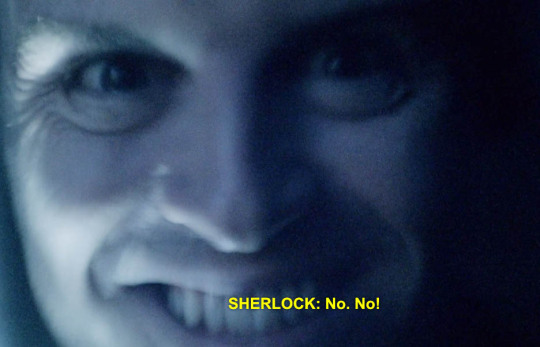
15. Sherlock goes on an international tour to chase after ‘Mary’.
Earlier event: In MHR Sherlock goes on an international tour to several countries to chase after Moriarty’s remaining criminal network, after faking his own death in TRF.
16. ’Mary’ dies from a bullet wound in the abdomen, with John at her side.
Earlier event: In HLV Sherlock was very close to dying from a bullet wound in the abdomen, with John at his side.
17. By smashing a Thatcher bust Sherlock gets hold of a memory stick with the acronym A.G.R.A. on it, which contains secret information.
Earlier events: in TGG Sherlock finds the lost memory stick with the top secret Bruce Partington Plans. In John’s blog case ‘The Six Thatchers’, a knife with Beppo’s initials on it was found inside one of the Thatcher figures.
18. There’s a scene with a swimming pool where Sherlock and the assassin Ajay are fighting over a memory stick.
Earlier event: in TGG there was a scene with the swimming pool (where Carl Powers had been murdered) and Sherlock, Moriarty and John were fighting over a memory stick.
19. There are several scenes from the London Aquarium where sharks swim around in bluish water.
Earlier event: In HLV Sherlock described Charles Augustus Magnussen as a ‘shark’ with a ‘dead eyes stare’, and he was referencing to the London Aquarium.
20. There are shattering glass transitions between scenes in TST.
Earlier events: John described in his blog post The Six Thatchers how he heard glass shatter when Beppo broke in. Glass shattering (a mirror) was also used to reveal a ghost trick in Sherlock’s Mind Palace in TAB:
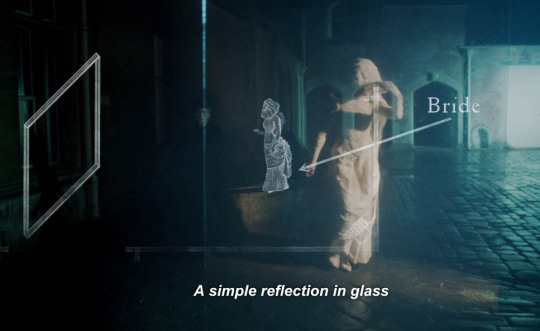
21. John refuses to see Sherlock for quite a while, after blaming him for ‘Mary’s’ death, which hurts Sherlock badly.
Earlier event: In TEH John refused to see Sherlock for some time in TEH, after Sherlock came back and told John thad he had faked his suicide. Sherlock seemed very sad about this.
Events in The Lying Detective
22. John visits a therapist for his problems with grief and depression. (And a depressed Sherlock suddenly visits John’s old therapist Ella in TST for his problems with John).
Earlier events: Already in ASiP John went to his therapist Ella for depression, and then he visited her again for his problems with grief over Sherlock in TRF.
23. Sherlock is waving a gun quite carelessly, shoots the wall in 221B and seems to be in a lot of distress.
Earlier events: In TGG Sherlock shot the wall in 221B and later carelessly scratched his head with a gun in the pool scene, where John had just shown willing to sacrifice his life for Sherlock:
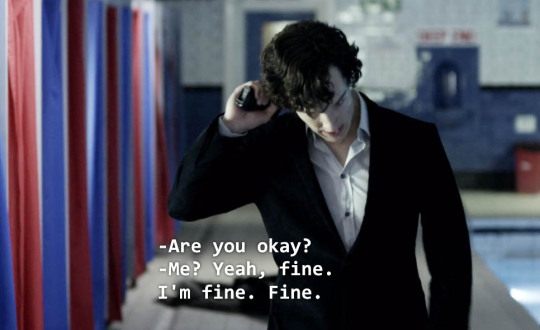
24. In 221B Sherlock manages to catch the cup of tea that Mrs Hudson has made for him but drops from shock, before it hits the floor.
Earlier event: In TBB Sherlock managed to catch the teapot that Soo Lin Yao was tending to in the museum but dropped from shock when Sherlock entered, before it hit the floor.
25. Sherlock is walking the streets of London at night together with Faith, who likes him and thinks he’s “nicer”. By walking with her, he hopes to prevent her from committing suicide, since Sherlock has deduced that she is alone and is carrying a gun in her handbag. Faith is also walking with a cane, which reminds Sherlock of John.
Earlier event: In ASiP Sherlock was running through the streets (and rooftops) of London at night together with John, who seemed to like him and admire him. By running together, trying to solve an exciting crime case, John’s psychosomatic limp was cured and he no longer needed his cane after that. (And John, who was depressed, was probably also prevented from committing suicide).
26. Sherlock predicts the future repeatedly; for some odd reason he knows two weeks in advance that John will get a new therapist and that John will want Molly to examine Sherlock, and he knows exactly where and when it all will happen, in spite of being kidnapped and brought there in handcuffs in the boot of Mrs Hudson’s sports car.
Earlier event: In ASiP Sherlock tried to convince John that he could predict the fortune cookies in chinese restaurants, but John didn’t buy it.
27. John disarms, assaults and beats the sh*t out of Sherlock when Sherlock is high, frightened and starts waving a scalpel. (It’s a completely horrible, abusive scene, where John is uncontrollably violent, but the event is treated like it was Sherlock’s own fault, as if he somehow deserved the beating. Which is truly disturbing).
Earlier events: In TEH John punched Sherlock in the face three times after Sherlock revealed that he had faked his death and tried to joke about it. In HLV John disarmed and sprained a ‘junkie’ (Bill Wiggins) who was waving a knife, using far more violence than the situation craved.
28. In the hospital, Culverton Smith tries to strangle Sherlock, but John comes to his rescue and fights down Culverton.
Earlier event: In TGG The Golem tried to strangle Sherlock at the planetarium, but John came to his rescue and bravely tried to fight down the much bigger Golem.
29. John seems furiously jealous when Sherlock receives a text message from Irene Adler, who is using a provocative personalized ring tone.
Earlier event: John seemed very jealous already in ASiB when Irene Adler was texting Sherlock, using the same provocative ringtone. He even kept track of the number of messages Sherlock received.
30. Sherlock puts on the deerstalker before leaving 221B because he thinks that’s what people expect from him.
Earlier event: In TEH Sherlock put on the deerstalker before leaving 221B to talk to the press, because he thought that’s what people expected him to do:

Events in The Final Problem
31. A little girl is on board an airplane full of unconscious people, and she cannot make her Mom wake up.
Earlier event: In ASIB a little girl (the same actor as in TFP!) and her sister claimed that they weren’t allowed to see their Granddad when he was dead. And then Sherlock was confronted with Mycroft’s plan to fool the terrorists: an airplane full of dead people (among them is the girl’s Granddad).
32. Sherlock’s flat at 221B Baker Street is blown up by an exploding drone (yet surprisingly intact at the end of the episode).
Earlier event: In TGG Sherlock’s flat was damaged by an explosion in the opposite house (the apartments at the centre of the explosion seemed totally destroyed). The whole thing was set up by Moriarty.
33. By using disguises and deception, Sherlock, John and Mycroft enter Sherrinford; a highly secured governmental establishment.
Earlier event: In THoB Sherlock and John, aided by Mycroft’s key card and claiming to be supervising officers, enter Baskerville; a highly secured military establishment:
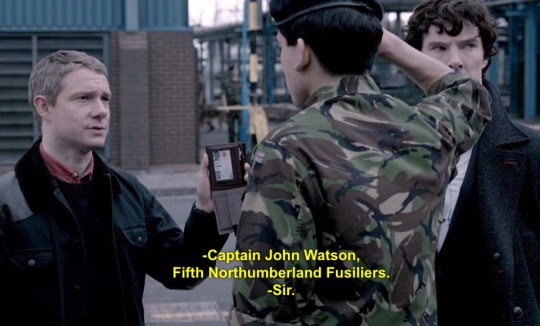
34. Euros, and later Sherlock, john and Mycroft, are kept in an isolated cell at Sherrinford.
Earlier events: in THoB James Moriarty is kept in an isolated cell and interrogated (tortured, as it seems). In HLV, he shows up in a padded cell and a straight jacket in Sherlock’s Mind Palace after Sherlock has been shot.
35. Euros uses Sherlock, John and Mycroft, without their consent, for her frightening psychosocial experiments.
Earlier event: In THoB Sherlock uses John – without his consent - for a frightening experiment on a hallucinogenic drug.
36. First experiment: Euros forces Sherlock to ask John to shoot the Governor of Serrinford, in order to save the Governor’s wife. John at first seems ready to do it, but he can’t manage it in the end. And it was all useless anyway: the Governor killed himself and his wife was shot anyway.
Earlier event: In ASiP Sherlock (unknowingly) made John shoot the serial murderer Jeff Hope, in order to save Sherlock from committing suicide with poison, in his gambling with the murderer just to prove himself clever. The whole thing could have been stopped if Sherlock just had handed Hope over to the police.
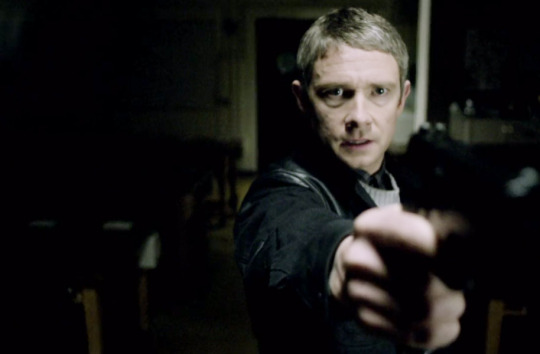
37. Second experiment: When Sherlock focuses on solving the crime of the three Garridebs and points out which of them is the guilty part, in order to save the two innocent Garridebs, Euros ends up killing them all anyway.
Earlier event: In TGG, when Sherlock wasted time, concentrating on solving the case of Connie Prince’s poisoning and get one step ahead of the murderer, rather than thinking of the victim’s prolonged suffering (he thought he’d help the old blind lady best in this way), the hostage and a bunch of other innocent people got killed by Moriarty anyway.
38. Third experiment: Euros forces Sherlock to make Molly reveal her love for him, which hurts her deeply, making Sherlock feel horrible afterwards. And it was all for nothing, since Euros later revealed that Molly’s life wasn’t in danger.
Earlier event: In ASiB Sherlock deduced out loud Molly’s attempt to dress up for a love interest and mocked her in a cruel way. When he realized that her love interest was he, Sherlock, he felt guilty and apologized:
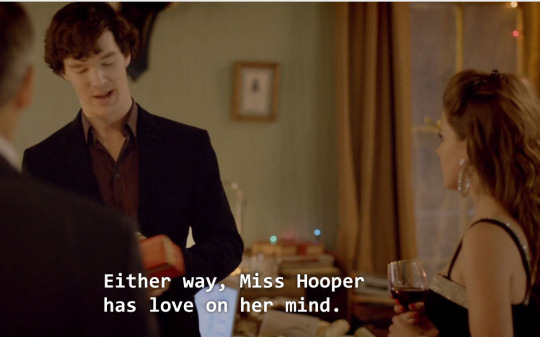
39. Fourth experiment: Euros tries to force Sherlock to shoot either his best friend (love of his life) or his brother. Moriarty reveals that “Holmes killing Holmes” is indeed his end goal. But instead Sherlock chooses to kill himself, which makes Euros abort the experiment.
Earlier event: In TRF Moriarty tried to force Sherlock to jump from Bart’s hospital’s rooftop and kill himself. Instead, with the help of his homeless network and Molly, Sherlock faked his death. Which later had disastrous consequences on John.
40. Sherlock is shot with Euros’ tranquilizers and falls backwards into unconsciousness.
Earlier event: In HLV Sherlock was shot with ‘Mary’s bullet and fell backwards into unconsciousness.
41. John is trapped inside a well with a rising water level, but Sherlock manages to break a code from the perpetrator and rescue him. Strangely, already in TLD Sherlock is complaining to John: “I’m at the bottom of a pit and I’m still falling, and I’m never climbing out”.
Earlier event: In TEH John was trapped inside a pile of wood, which was being set on fire, but Sherlock managed to break a code from the perpetrator and rescue him.
So far, I’ve found over 40 events that have similarities in earlier episodes. I’m sure this list could go on and on. These are far too many repetitions of the same, or very similar, events for them to be mere coincidences. (perhaps someone could find out some really unique events of Series 4 and do a statistic significance test on the relative proportions).
Some people have written this off as bad or lazy screenwriting. But I think this could only be true to a certain extent, because otherwise we would have found a similar amount of repetitions in the earlier series. And to me there’s no way – absolutely no possibility – that the authors would repeat a case like The Six Thatchers, which has been thoroughly described on John’s blog several years earlier, with no intention of the fans noticing this. It seems very deliberate to me.
Conclusion – the only one that makes sense to me about Series 4 (and most probably the last half of HLV as well) - is: IT’S FAKE. The whole of Series 4 is happening inside Sherlock’s head; Sherlock is re-hashing a series of memories from his life together with John and combining them in new ways, just like a human brain does when it’s dreaming. Some of these inner experiences seem to produce emotional and/or moral growth in Sherlock. It might be EMP, simulations, delirium, drug-induced hallucinations or whatever. But Series 4 just can’t be real; it happens in Sherlock’s head.
So, basically: Sherlock needs to wake up to a Series 5 and help throw out all the demons that are keeping him and John apart. ;)
291 notes
·
View notes
Text
Hello Serbia, we're on the last leg!
Tuesday 21 August we said goodbye to Budapest and headed out to Serbia and its capital Belgrade. We stopped at Novi Sad for lunch and a quick drive past the Petrovardin fortress to view the "drunk clock". So named the Drunken Clock because the hands of the clock are 'backwards' in that, the large hand is the hour hand, and the small hand is the minute hand (backyards than normal clocks), this was apparently because the fisherman coming down the Danube couldn't see the small hand to tell the time, so the town changed the hands. On a side note - its interesting that the Serbs had their own clock 600 years before the Swiss did but were never credited with it (fyi not this one - a serb created a clock in Russia..)

On the way into the city of Belgrade we viewed the damaged buildings left in situ as a reminder/memorial of the NATO bombings the city sustained as an attempt to stop the Kosovo war in 1999. We received a guided walking tour of the citys' highlights with a local guide. It was very interesting to stand in Republic square, viewing its four sides of buildings that illustrate the different stages of Belgrade from Romantic influenced to communist period to modern buildings. The centre pedestrian heart of the city was alive with streets of shops bars and restaurants as well as it's bohemian quarter with its quirky storefronts. Kalemegdan park and the statue of Pobednik, a naked male figure created in 1928 to commemorate Serbia's victory over the Ottomans and the Austro-Hungarians. After much deliberation on possible locations it was finally erected overlooking the rivers in 1928 . This location was selected as it was meant to be a position where the scultures nakedness would not affect the residents. Little did they realise that the city would extend to the other side of the river, ensuring great viewing for the residents who settled there! We walked the Belgrade fortress and took in the sunset view of the intersection of the Danube and the Sava rivers. All then followed by a Serbian dinner at a local restaurant. Beograd is a place definitely worth the visit and more time spent to explore would have made it even better, the one unfortunate drawback of a bus tour is sometimes a lack of time in places - but it's all good, it just gives you another place to go back to one day!






22 August saw us all on the road again, heading to Sofia, Bulgaria....funny that, it's a bus tour!!
Our first stop is Niš for lunch and a quick exploration of this incredibly old city. Niš is one of the oldest cities in the Balkans, first founded by the Scordisci in 279 BC and the birthplace of Constantine the Great (the first Christian emperor and founder of Constantinople).

Niš was a great place to explore and worth a bit more time to see it a little better!
Still enroute to Sofia...more to come!!


1 note
·
View note
Text
In Kosovo, a Peace Built on Separation
By Marc Santora, NY Times, Jan. 30, 2018
MITROVICA, Kosovo--“This is a piece of heaven on earth,” the monk said. “When you are here, you feel it.”
Dressed in a long black robe and stroking a long black beard, the monk’s words would seem a simple phrase, a holy man talking about a holy place.
But nothing is simple here.
His home, the Banjska Monastery, is set high above a village just outside of Mitrovica in Kosovo--a divided city in a divided country that still bears the scars and nurses the slights of wars dating back more than 600 years.
Built between 1313 and 1317 by the Serbian king Stefan Milutin, the monastery was his burial site until the Battle of Kosovo in 1389.
That battle, between the Christian Serbs and the Ottoman Turks, has been highly mythologized and there are contradictory historical accounts. What is known is that the Serb leader, Prince Lazar, was killed. His death has become a symbol of Serb suffering and resistance that still resonates.
As the myth goes, on the night before the battle, Lazar was visited by a saint in the form of a gray falcon with a message from the Virgin Mary.
He could win the battle and find a kingdom on earth. Or he could lose the battle and find a kingdom in heaven. He chose to lose.
On June 28, 1989, on the 600th anniversary of the battle, Slobodan Milosevic arrived by helicopter at the site and reframed the choice that faced Lazar. It was time, he said, for Serbs to find their “heaven on earth.”
It was a call to arms and what eventually followed was an ethnic cleansing campaign against Kosovo’s Albanians that ended only after a 78-day United States-led NATO bombing campaign in 1999.
But two decades after the bombing helped stop the violence, and a decade after Kosovo declared itself independent from Serbia, this remains a land more divided than at peace.
Here in Mitrovica, in the northern part of the country, ethnic Serbs dominate; only recently have the police begun wearing the country’s official uniform.
Many people here do not see themselves as part of Kosovo as it currently exists. They want to be a part of Serbia but feel like pawns in the bigger game as Serbia seeks membership in the European Union, and expect to be forsaken by Belgrade if that day comes.
This was my first visit to Kosovo in my new post covering Eastern and Central Europe, a quick trip to cover a hastily arranged visit by the Serbian president, Aleksandar Vucic, who came to talk to a community on edge after the murder of a prominent ethnic Serb politician in Mitrovica.
At a town-hall meeting, Mr. Vucic was greeted by angry and distrustful residents who asked who would protect them, saying they needed weapons.
They were gathered in a crowded hall in a city full of daily reminders of how near their former foes remain but how far apart their lives have become.
Every day, the call to prayer echoes from a mosque on the southern side of the bridge that spans the Ibar River, which cuts through the city. Ethnic Serbs across the bridge can hear the muezzin’s song as they walk past a statue only recently erected. It is dedicated to Prince Lazar. He is looking across the bridge, which is guarded by international peacekeepers. The Italian Carabinieri currently have the job.
They are just one of the scores of outside organizations that are trying to make sure the peace here does not unravel. The most visible is the NATO-led security force, KFOR.
It is easy to tell when you are driving in the ethnic Serbian area even before you see any international troops. Many of the cars don’t have license plates or have plates issued by Serbia, which are considered illegal by the government in Pristina.
Children go to separate schools. Men work in separate industries. Families eat in different restaurants. Students who graduate from the university in Mitrovica do not have their diplomas recognized by the government in Kosovo, which is led by ethnic Albanians. Even the cellphone service is divided, with Serb areas inexplicably often linked to service based in Monaco.
Given all the division, it was interesting to note--and perhaps a hopeful sign--that the shooting of the local politician, Oliver Ivanovic, did not lead to immediate finger pointing across the river to the ethnic Albanian community.
Instead, many speculated that Mr. Ivanovic’s fight against the criminal networks within the ethnic Serbian community led to his killing.
“The sense of fear among people is incredible,” Mr. Ivanovic said not long before his murder.
“I want to make it very clear: these people are not afraid of Albanians, but Serbs, local strongman and criminals,” he said. “Policemen are watching, not doing anything about it and residents feel like they have not protection, even though it’s our people, Serbs, in the Kosovo police in the North.”
The monk, who only goes by his given priestly name Georgije, agreed. “There are too many people living in sin,” he said.
The Serbs in Kosovo were lost, he said, blaming the separation of church and state. The only way to restore the natural balance, he said, would be to have a government based on Serbian Orthodoxy--a solution that is anathema to Kosovo’s Muslim population.
Over the centuries, the monastery he calls home has been ravaged by fire, abandoned and razed to the ground. Under Ottoman rule and until the end of World War I, it was a mosque. It underwent a restoration in 1990, when it was declared a Cultural Monument of Exceptional Importance by the Serbian government. Always, the Serbs came back.
That long history shaped his views and the views of many still living in Mitrovica. As a descendant of Milutin and Lazar, the monk gave voice to the Serb sense of persecution.
“First we were forced to live under the Turks,” he said. “Now it is under the Albanians and the Americans.”
But Serbs remember, he said. And he was hopeful that the Serbs would restore their medieval dominion over Kosovo once again.
0 notes